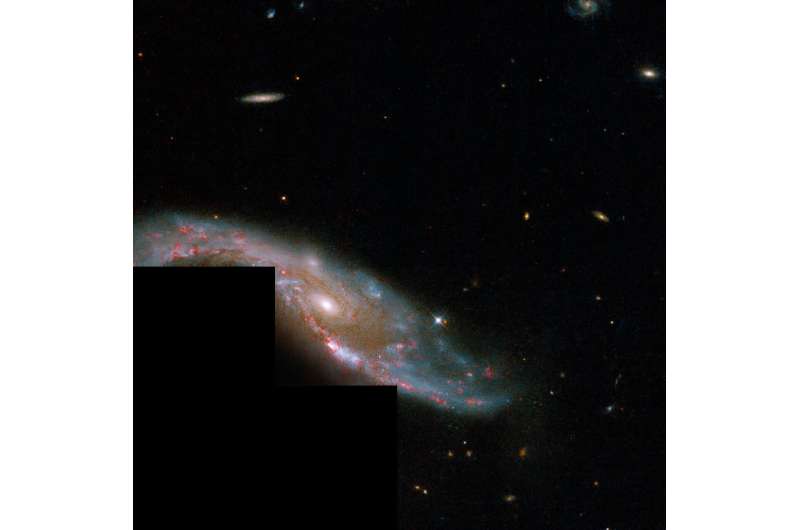Hubble views an interacting spiral

This image, taken by the Wide Field and Planetary Camera 2 on NASA's Hubble Space Telescope, features the spiral galaxy NGC 3509. Located some 350 million light-years away, NGC 3509 is an interesting galaxy whose sweeping tidal tail (not visible in this image) offers hints of its evolution.
Hubble observed the spiral as part of a study that looked at the physical conditions in strongly interacting and merging galaxy nuclei, but found that NGC 3509 has a single, relatively undisturbed nucleus surrounded by a swirl of dust lanes. This suggests that the galaxy has not undergone a major disk-to-disk merger. Instead, NGC 3509 may have had a minor merger with a smaller galaxy, or it may be interacting with a small companion whose gravity is creating the tidal tail.
Like most spiral galaxies, NGC 3509 is actively creating new stars. The color red in this image represents near infrared wavelengths of light and showcases star-forming regions along the galaxy's spiral arms.
Provided by NASA's Goddard Space Flight Center





















